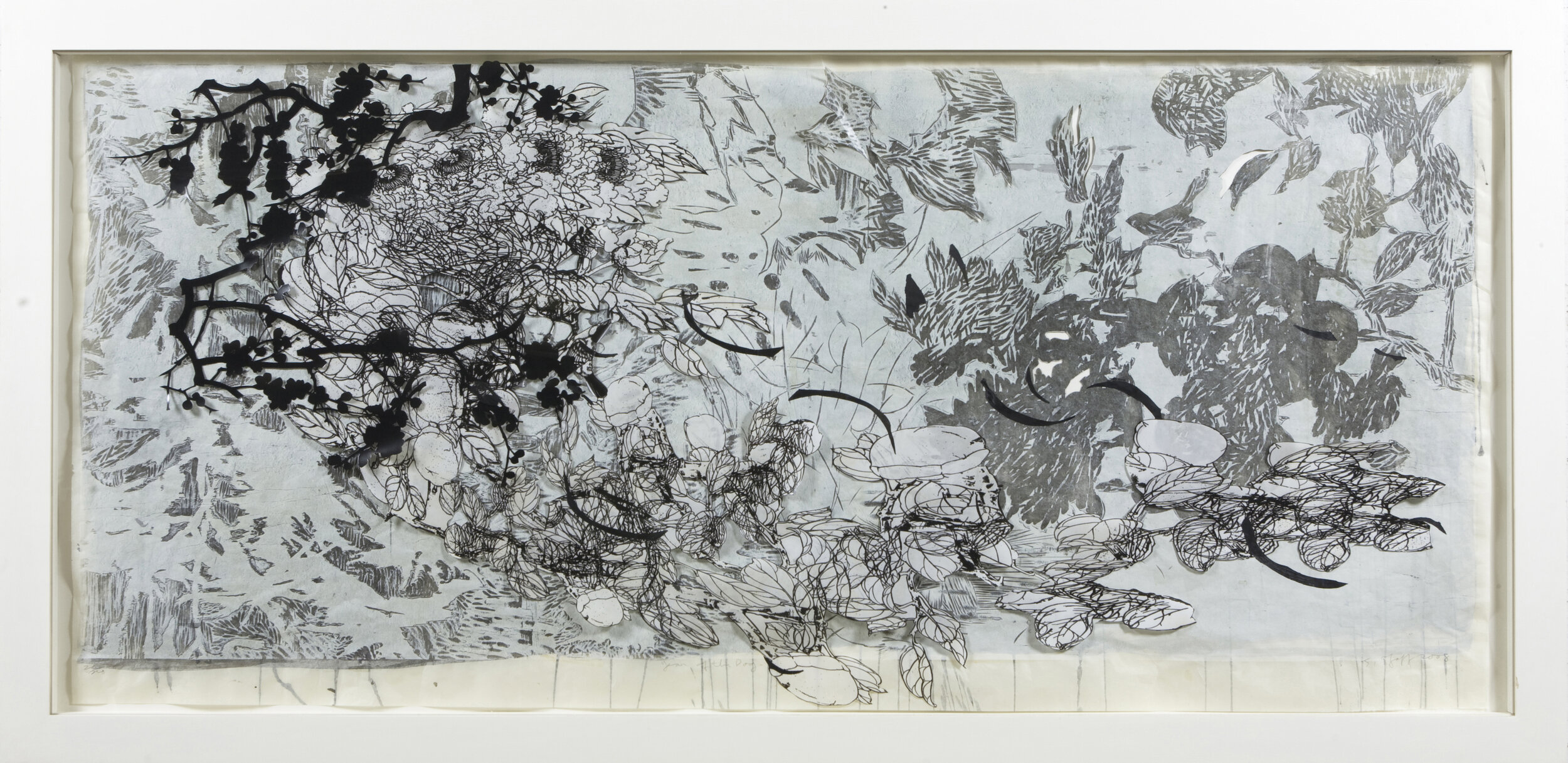Judy Pfaff, from Year of the Dog Series
JUDY PFAFF: IMPROVISATION AND INNOVATION
From Tandem Press’s 25th Anniversary Catalog - an excerpt of an essay by Faye Hirsch
Of all Pfaff’s projects none is more complex than her series Year of the Dog. Begun in 2008, these twelve large horizontal prints, each measuring more than 3 by 7 feet, have been in continual production ever since. For them, the press had to build a special storage area, where various finished components—many of them cut out by students over many hours—are kept in carefully labeled folders. Collaging layers of cut-out elements printed front and back, lacquered, waxed, folded, and burned, Pfaff took nature as her subject in the prints—though this is nature many times mediated and transformed. Flowering cherry branches, peonies, birds, and other flora and fauna are adopted from various source books. At times their details are delineated, printed in relief, at others they are mere shapes, silhouetted in black, red, gold, or white, cut out and collaged. This device, along with a decision to place light backgrounds behind darker foregrounds, lends the images a quality of being backlit. Some of the prints feel windswept, with long horizontal swaths of lines swooping across landscapes and gardens, bearing along petals in strong currents; others still as a summer night, with a ragged-edged orb—originally a throwaway, the circular remnant of other cutout shapes—resembling the moon passing behind clouds and darkened trees. The final print in the series is also nocturnal, with the white silhouettes of bats flapping through; Pfaff had an infestation of the creatures in her old house in Kingston, N.Y., and paid them homage in her work.
Year of the Dog is a very personal series for Pfaff. Within one year she had lost her mother and two very close artist friends—her old mentor, Al Held (d. 2006), and Elizabeth Murray (d. 2007). She saw the prints as her way out of a very dark time, as a route to recovery:
I had been making very sad work for me—not that I’m usually an optimistic person. But all those deaths were really difficult. I was born in the [Chinese] year of the dog; Al was born and died in the year of the dog. But, I said, “I cannot stay upset any longer.” So I chose these flowers—some are darker than others, but I just willed being more optimistic. Mourning too long, indulgent with sadness—I’m not good at that. This was a workaday way of getting out of that.
Pfaff’s “workaday” recovery has resulted in her most complex works at Tandem to date. Since then, she has scaled back into a few simpler projects—a series of small untitled 2008 landscapes, for example, hot orange skies and moonscapes seen through flowering branches, that miniaturize some of the concerns of Year of the Dog—giving the printers some catch-up time. It is a breathless process, keeping up with Pfaff, but her endeavor carries on a venerable tradition of adventure that marks collaborative printmaking at its finest.

